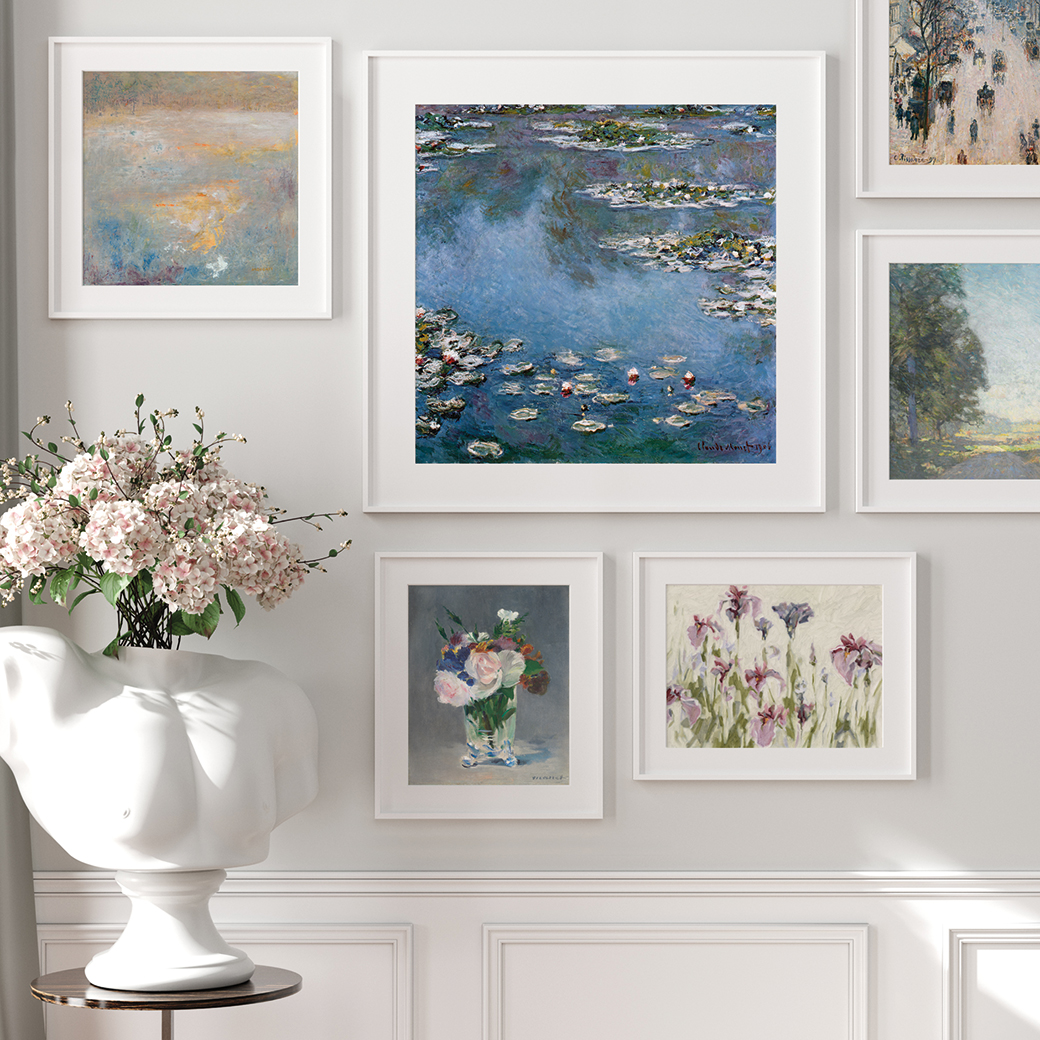Series Spotlight - Artistic Movements - Impressionism

Focusing on the ‘impression’ of form rather than hyper-detailed reality, Impressionist artwork can often be identified by small visible brushstrokes, the depiction of light and how it changes, ‘ordinary’ subjects and unusual visual angles. Life in late nineteenth century Paris was changing rapidly and Parisian cafés acted as meeting places for artists that allowed for a previously unseen kind of collaboration and organisation, regardless of an artist’s background, style, or success. Where art had previously focused on historical events, religious themes and other grandiose subjects, the increasing popularity and accessibility of photography at the time meant that popular subjects shifted towards capturing snippets of everyday life. The recent invention of pre-mixed vivid paints meant that many Impressionists painted ‘en plein-air’, in sunlight and directly from nature. Even the artists who painted indoors were impacted by these changes as artwork became much lighter and brighter.
By depicting the feelings in a fleeting moment instead of staying unerringly faithful to realism, Impressionism predicated the move towards modern art and, as such, the whole philosophy of the avant-garde. This collection of Impressionist art shows the spread of this iconic movement throughout both time and the world, featuring streetscapes from Paris to London to New York. With fields and florals, figuratives and farmyards, these artworks highlight the scope and scale of this artistic ethos, from Aurora Bell’s hazy floral daydreams to Frederick Hassam’s fields of flowers or Ethel Walker’s floral arrangements. Although much has changed over time, the influence of Impressionism can still be seen in contemporary artists; Lilia Orlova Holmes and Monet share an affinity for sparkling light atop waterlily covered ponds and Andy Waite has a skill for dramatic cloud and skyscapes that can also be seen in Tom Thomson’s fiery sunsets. By focusing on experience over observation, beautiful light and a single snapshot of a moment, the principles and features of Impressionism has remained relevant to artists from the late nineteenth century to this day.